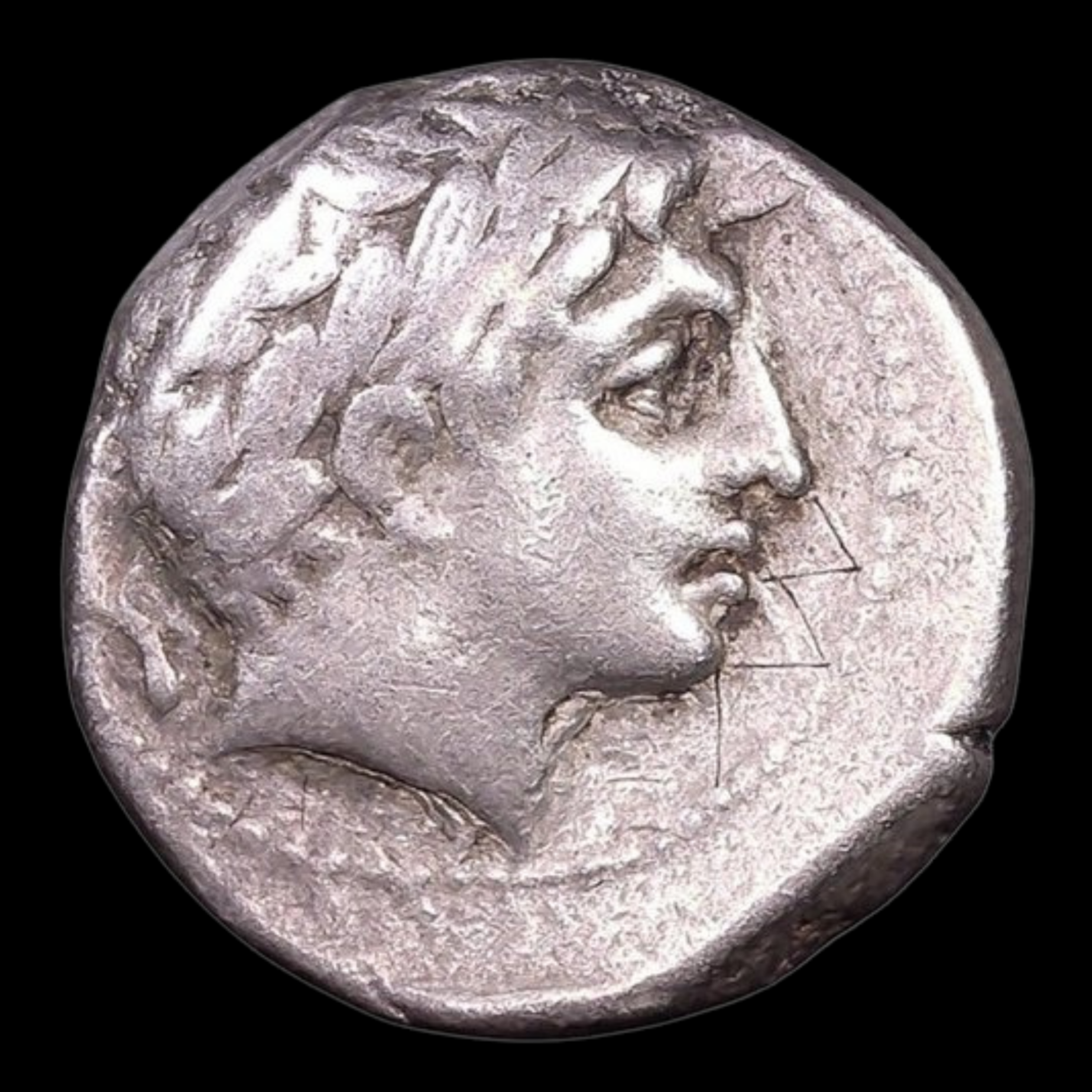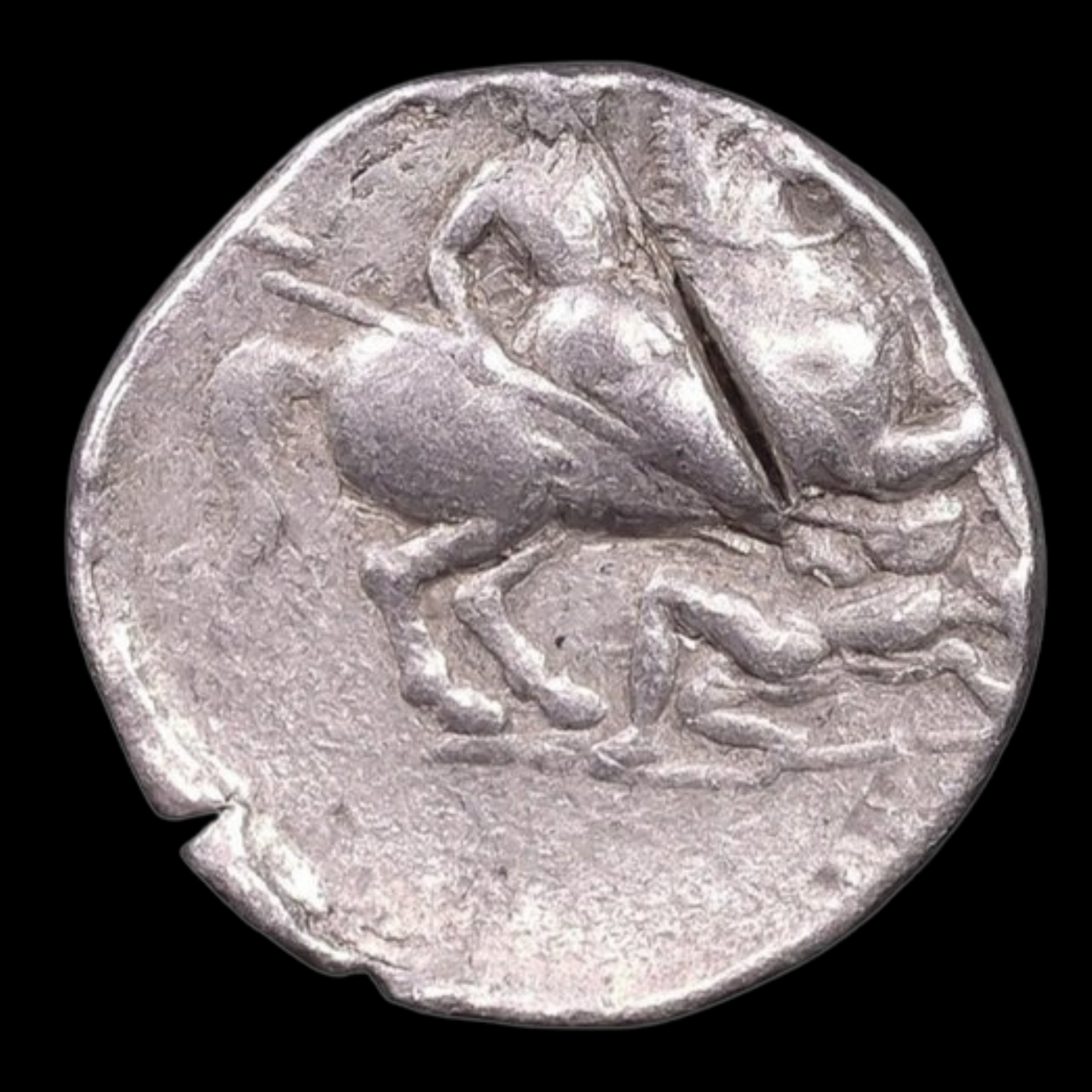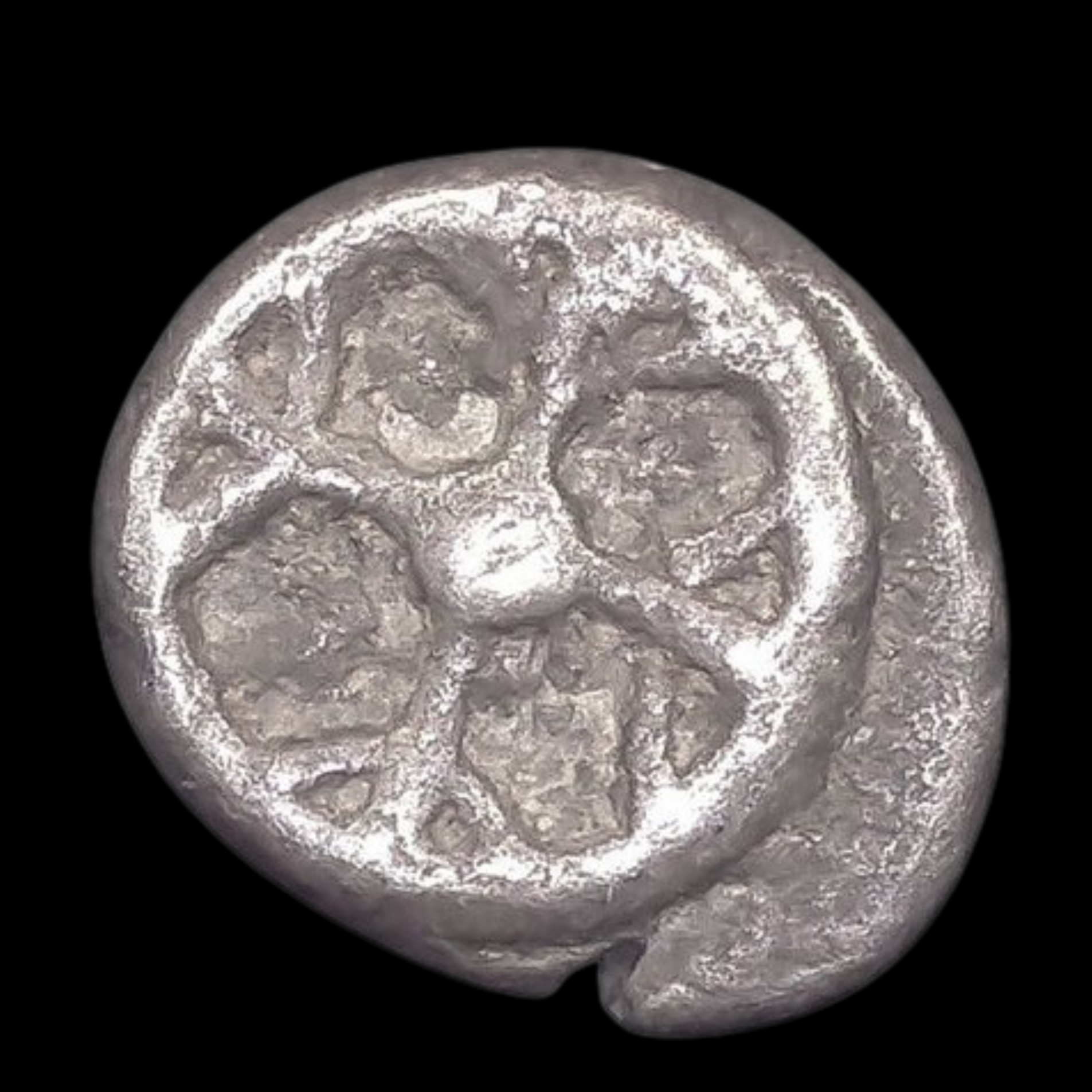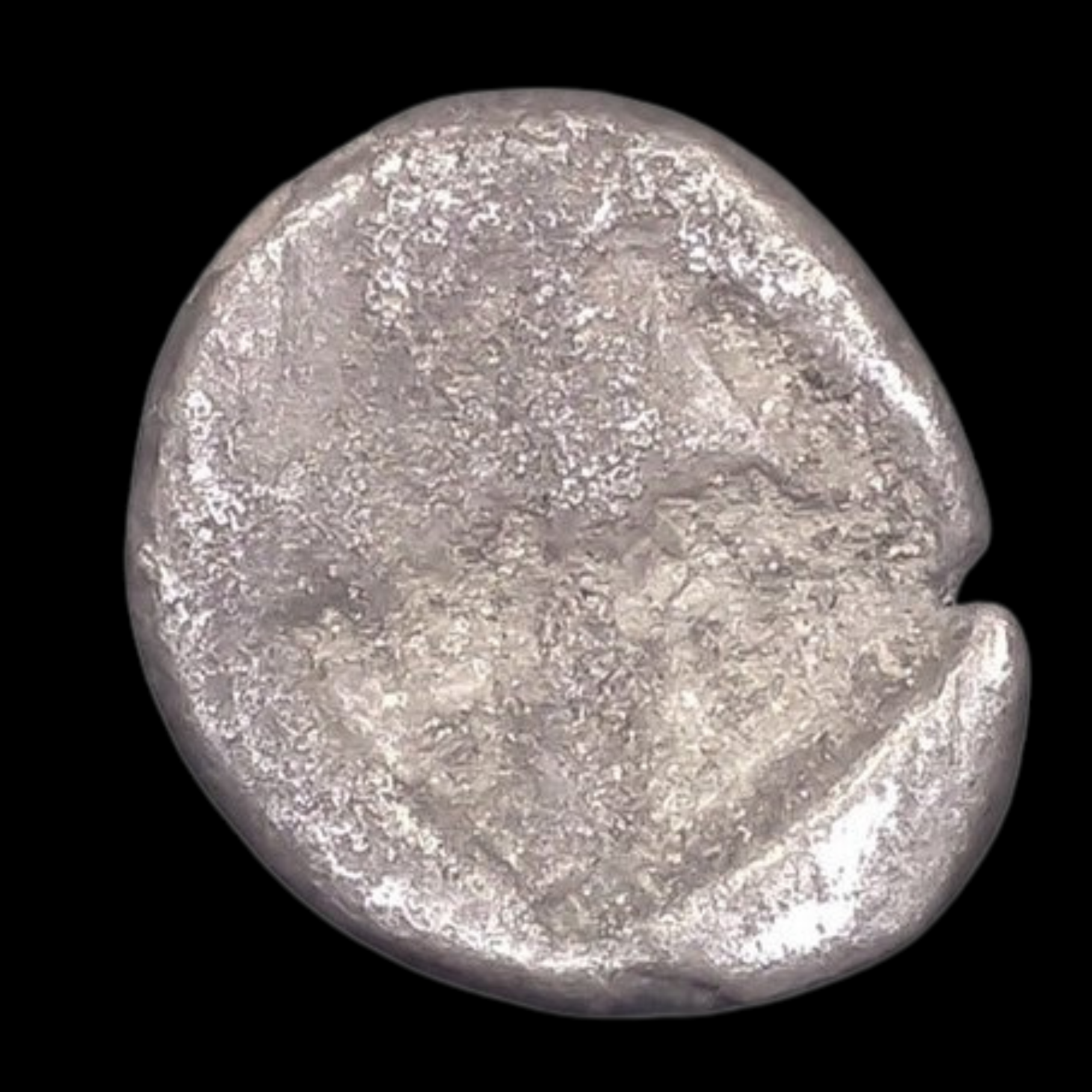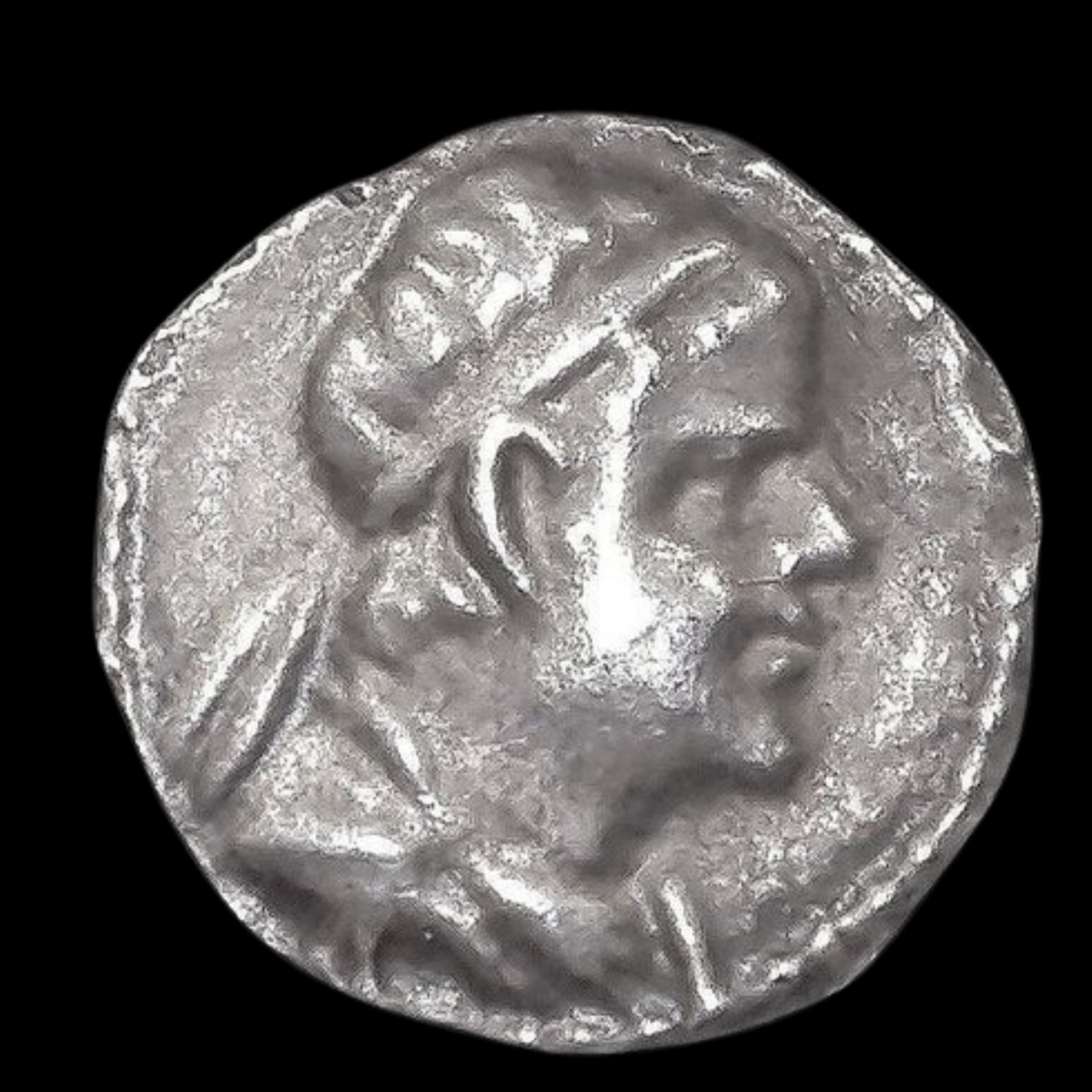 Image 1 of 2
Image 1 of 2

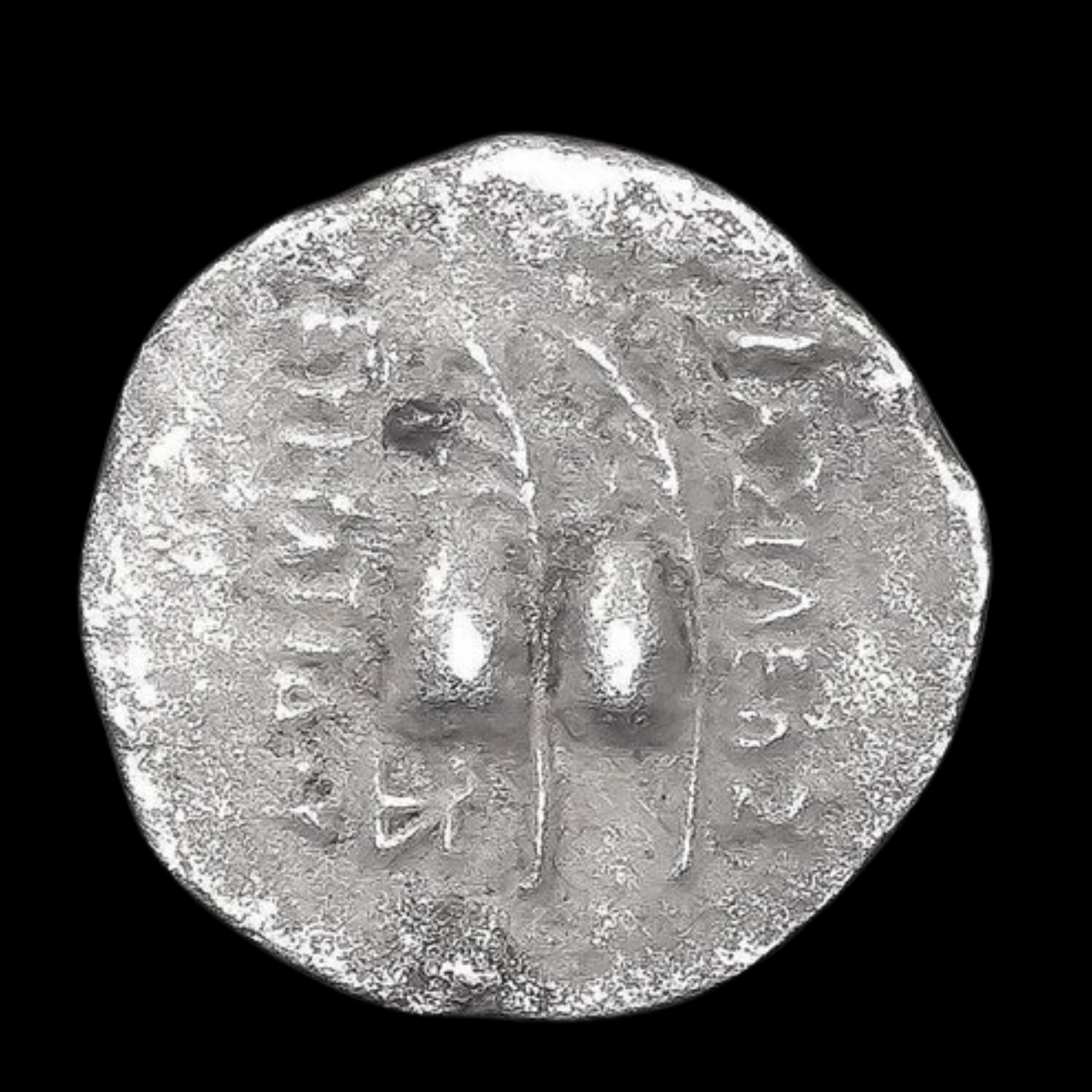 Image 2 of 2
Image 2 of 2



Ancient Greek Silver Coin of King Eucratides I (Greco-Bactrian Kingdom)
This tiny silver coin was issued by King Eucratides I, a powerful Greco-Bactrian ruler who controlled territories in what is now Afghanistan and parts of Central Asia. As the smallest silver denomination in the Hellenistic monetary system, this obol facilitated everyday transactions in this eastern outpost of Greek culture.
Coin Description:
Front side: Diademed (royal headband) and draped bust of King Eucratides I facing right
Back side: Greek inscription "ΒΑΣΙΛΕΩΣ ΕΥΚΡΑΤΙΔΟΥ" (of King Eucratides), caps of the Dioscuri (divine twins Castor and Pollux) each surmounted by a star, accompanied by a palm branch; monogram at lower left
Technical Details:
Silver composition, weighing 0.57 grams
Obol denomination (smallest standard silver coin, worth 1/6 of a drachm)
Reference: Bopearachchi page 301, Series 3, monogram G
No certification mentioned
Date: Circa 171-145 BCE
Historical Significance:
Eucratides I was one of the most powerful rulers of the Greco-Bactrian Kingdom, a Hellenistic state established in Central Asia following Alexander the Great's conquests. This small coin represents the remarkable persistence of Greek cultural influence in this remote region (modern Afghanistan and parts of Central Asia). The Dioscuri caps symbolize divine protection, while the Greek inscriptions demonstrate how the Greek language remained the official medium of administration even in these distant eastern territories.
This tiny silver coin was issued by King Eucratides I, a powerful Greco-Bactrian ruler who controlled territories in what is now Afghanistan and parts of Central Asia. As the smallest silver denomination in the Hellenistic monetary system, this obol facilitated everyday transactions in this eastern outpost of Greek culture.
Coin Description:
Front side: Diademed (royal headband) and draped bust of King Eucratides I facing right
Back side: Greek inscription "ΒΑΣΙΛΕΩΣ ΕΥΚΡΑΤΙΔΟΥ" (of King Eucratides), caps of the Dioscuri (divine twins Castor and Pollux) each surmounted by a star, accompanied by a palm branch; monogram at lower left
Technical Details:
Silver composition, weighing 0.57 grams
Obol denomination (smallest standard silver coin, worth 1/6 of a drachm)
Reference: Bopearachchi page 301, Series 3, monogram G
No certification mentioned
Date: Circa 171-145 BCE
Historical Significance:
Eucratides I was one of the most powerful rulers of the Greco-Bactrian Kingdom, a Hellenistic state established in Central Asia following Alexander the Great's conquests. This small coin represents the remarkable persistence of Greek cultural influence in this remote region (modern Afghanistan and parts of Central Asia). The Dioscuri caps symbolize divine protection, while the Greek inscriptions demonstrate how the Greek language remained the official medium of administration even in these distant eastern territories.







